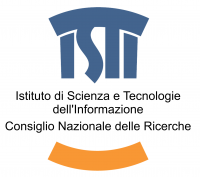Tuna KALAYCI, Francois-Xavier SIMON, Carmen CUENCA-GARCIA, Jamieson C. DONATI, Meropi MANATAKI, Apostolos SARRIS
There has been a radical proliferation in the remote sensing of archaeological landscapes. The rise in the number of specialists, easier access to sensor data, more user-friendly software, and the increase in open-access (or affordable) data make remote sensing a prime choice for landscape exploration, analysis, and modelling. Now, it is almost a norm to follow a multi-sensor approach for data collection. Despite these significant advancements, scholars usually study sensor datasets in isolation and disregard the immense potential in integration methodologies. At best, results obtained from different sensors are synthesized qualitatively at the interpretation level (e.g. Masini et al. 2008) and only in exceptional cases physical and/or statistical modeling of multiple sensor data is achieved (e.g. Neubauer and Eder-Hinterleitner 1997; Kvamme et al. 2006).
The motivation for the sensor integration is that different sensors collect information based on different surface and sub-surface physical characteristics, and thus, a joint analysis of different sensor data provides more complete information of the area, under investigation (Hoekstra et al. 1993). Following an integrated sensor approach, scholars may acquire more information than the sum of information which would have obtained from individual sensors (1+1=3).
Locating the session under the umbrella of terms image fusion, image merging, image integration, multi-sensor data fusion, data integration, and information fusion (Pohl and Van Genderen 1998), we principally ask what are the sensor-data integration algorithms for the investigation of archaeological landscapes, what are the potential sensor data integration architectures, how individual sensor data analysis affects the integration process, and under what conditions integration provides superior results (Hall and Llinas 1997). Through this session, we hope to critically evaluate current status of qualitative sensor-data integration in archaeology and to further push the envelope for the betterment quantitative approaches.
The session welcomes participants investigating archaeological landscapes with a multi-sensor approach, including geophysics, airborne and spaceborne sensors, aerial photography, LiDAR, and alike. In particular, we invite studies which provide data integration using (but not limited to) algebraic procedures, Dempster-Shafer Theory, neural networks, Bayesian networks, fuzzy set theory, principle component analysis or any combined methodology.
References
- Hall, D.L. & Llinas, J., 1997. An Introduction to Multisensor Data Fusion. Proceedings of the IEEE, 85(1), pp.6–23.
- Hoekstra, P. et al., 1993. Geophysical data fusion for subsurface imaging, Coleman Research Corp., Columbia, MD (United States). Funding organisation: USDOE, Washington, DC (United States).
- Kvamme, K. et al., 2006. New Approaches to the Use and Integration of Multi- Sensor Remote Sensing for Historic Resource Identification and Evaluation, University of Arkansas, Center for Advanced Spatial Technologies.
- Masini, N. et al., 2008. Integrated Remote Sensing Techniques for the Detection of Buried Archaeological Adobe Structures: Preliminary Results in Cahuachi (Peru). Advances in Geosciences, 19, p.75.
- Pohl, C. & Van Genderen, J.L., 1998. Review Article Multisensor Image Fusion in Remote Sensing: Concepts, Methods and Applications. International Journal of Remote Sensing, 19(5), pp.823–854.


